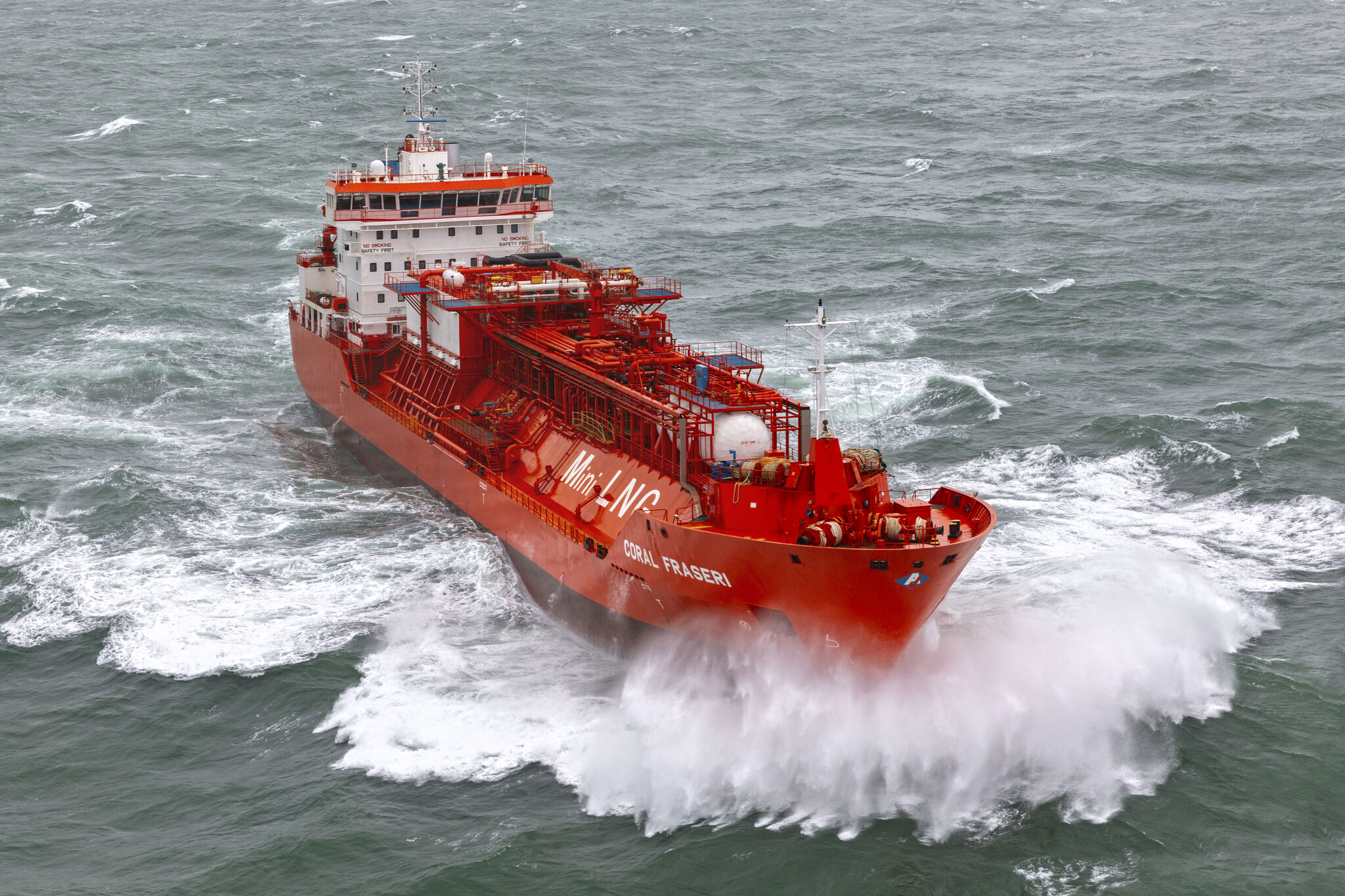This story requires a subscription
This includes a single user license.
Building on its existing activities supplying alternative fuels, Bunker One is expanding its current fuels portfolio by adding physical LNG and LBM or bio-LNG, according to a statement by Denmark’s Bunker Holding.
Bunker One expects to be ready to start first physical LNG deliveries in January 2025.
With this move, Bunker Holding joins a growing number of companies looking to develop their LNG bunkering business.
DNV’s Alternative Fuels Insight platform recently revealed that 61 LNG bunkering vessels are in operation and 13 are on order.
According to the platform, there are now 609 LNG-powered ships in operation and 565 LNG-fueled vessels on order.
These statistics do not include smaller inland vessels or dual-fuel LNG carriers.
Bunker One LNG
Bunker One has established a new unit Bunker One LNG
The newly established entity will manage the physical LNG fuel portfolio, including last-mile delivery, and will be headed by managing director, Michael Behmerburg.
Behmerburg joins from a position as director of new fuels at Germany’s Hapag-Lloyd.
“We are extremely pleased to be welcoming Michael Behmerburg to steer our Bunker One LNG entity. Michael brings a wealth of experience that is important for us to navigate properly in the upcoming transition,” Peter Zachariassen, CEO of Bunker One said in the statement.
Vessel charter
Bunker One LNG has chartered the 10,000-cbm vessel Coral Fraseri.
However, the company did not provide details of the charter deal.
The 2009-built LNG and ethylene carrier is 137 meters long and 19.8 meters wide.
“We are working hand in hand with the vessel’s owner Anthony Veder to bring the vessel into operation. The vessel will undergo a regular class renewal at the end of 2024, during which several modifications will be carried out to enhance her capabilities as an LNG bunker vessel,” Behmerburg said.
The purpose of the modification is to prepare the vessel for best-in-class service to the majority of seagoing vessels, including tankers, containerships, and car carriers.
Also, Bunker One LNG is currently in the process of securing bunker permits to cover key ports in Northwest Europe.
“We are very excited about this move to include physical supply of LNG and LBM as part of Bunker Holding’s fuel offering, which builds on our successful activities supplying LNG through third parties,” Valerie Ahrens, senior director of new fuels and carbon markets at Bunker Holding said.
“Fossil LNG can offer up to 23 percent in greenhouse gas (GHG) reductions compared to conventional fuels and accompanies shipping’s transition to a multi-fuel future,” she said.
“Hence, we regard LNG as a stepping stone to bio-LNG and e-LNG, which will help the industry achieve the mid-century decarbonization targets set by the IMO,” Ahrens said.

